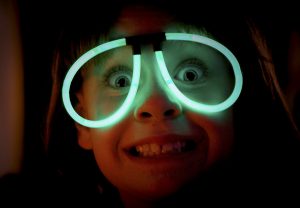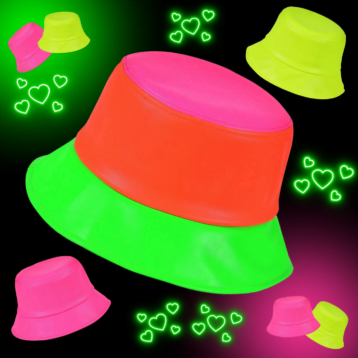This Autism Awareness Month, let’s shed some light on how you can use glow sticks for sensory play, providing tactile and visual stimuli that will make a world of difference for autistic children and adults alike.
What is autism?
Autism is a lifelong disability that can effect the way a person communicates and interacts with people and the world around them.
Children with autism may struggle to make friends and relate to people in a meaningful way.
People on the spectrum have what’s knows as the ‘triad of impairments’, namely:
- Social interaction such as playing or working with other people
- Social communication; for example, a lot of communication is non-verbal and we use many metaphorical turns of phrase (see the opening paragraph) which may cause confusion.
- Social imagination; this is the ability to understand and predict how other people think. For example, an autistic person may assume that because they know something that other people also know the same information.
Making sense of sensory experiences
People with autism often experience over-sensitivity or under-sensitivity in some areas of perception, and can even experience both at different times. The National Autistic Society (NAS) offers some helpful advice on how to engage in positive sensory play with an autistic person:
- Be aware of the environment and try to spot any potential problems. Can you change anything?
- Be creative. Think of creative ways to create positive sensory experiences (see our list of suggestions below)
- Be prepared. Tell the person about the sensory experiences they may have in different environments so that nothing surprises them.
The NAS suggests it can be helpful to draw up a sensory profile detailing the sensory abilities of a person with autism to help you create positive play scenarios.
What is sensory play?
Sensory play is any play activity that stimulates one or more of the five senses to help children develop a positive connection to the world around them.
Sensory experience plays a crucial role in development from birth to early childhood.
It can be hard for children or adults with autism to block out the sensory input from the world around them in order to focus on interacting with a teacher or play mate.
The use of glow sticks in sensory play is a great way of helping a person with autism focus on their immediate environment without getting overwhelmed by sensory overload.
The bright, joyful colours of a glow stick are exciting, and they emit a very gentle light that is not at all harsh, and so is unlikely to provoke a negative reaction.
Glow sticks not only emit pleasing hues that can have a calming effect on those experiencing stress or anxiety, they are really tactile too.
It’s important to make sure that autistic people are happy with tactile experiences such as wearing a glow bracelet or necklace.
Ensure that any autistic person is made aware of the kinds of sensory experiences they will have, and always ensure they are comfortable in their environment. Stop if they experience any distress.
Body awareness
Some autistic people struggle with body awareness. A glow bracelet or glow stick cap can be a great fun way to encourage autistic people to be more aware of their own body.
Eye contact
Eye contact can be very difficult for people with autism. Using a pair of glow glasses is a fun way of encouraging eye contact. Pop on a pair to demonstrate how eye contact doesn’t have to be scary… it can be fun – and funny – too!
Exploration
Placing glow sticks and other luminous objects like glow in the dark balls, or LED balloons, around a room is a great way to encourage autistic children to explore their environment. They can help people with autism focus in specific areas, will help spark curiosity, and encourage them to explore their surroundings in a fun way.
Discounts
We offer a discount for Parent Teacher Associations and Charities, so if you’re looking for glow products to facilitate sensory play, fill in this short form telling us a bit about yourself, and we’ll send you a special discount code for all orders placed through our website.
Safety
All our products are high quality, carry the CE (European Conformity) mark, and conform to the British EN71 safety standard. Always check the packaging for minimum age requirements, and individual product safety guidance.
Before engaging in any sensory play activities, it is a good idea to consult an autism specialist, understand the needs of any autistic persons under your care, and make sure play is fully supervised.
Ideas for sensory play with glow sticks
Here are some fun and easy examples of sensory play with glow sticks.
Glowsticks in the bath
Glowtopia glow sticks are waterproof so they can be a great addition to any water play. They can be a great way to encourage bath time or make a trip to the swimming pool less daunting.
This is a great idea to encourage reluctant bathers, but also a great way of enriching your child’s sensory experience.
One mother writes about both her and her child’s joy of watching brightly coloured glow sticks reflect on the water, then be submerged in a colourful display of bubbles (bubble bath optional) and swishing water.
Glowsticks at the pool
Glow sticks in the bath is a great way to engage in sensory play in a solo environment.
There’s some fun to be had with a more social encounter with water… at the pool.
Lots of autistic people love swimming, but there can be pitfalls.
Loud music played through the PA; the echoey acoustics of poolside chatter; peeping whistles… all these things that most take for granted at a swimming pool can cause distress for those with autism. Here’s how to make the experience more positive and a great way autistic people can interact with others.
Many pools and leisure centres are keen to provide disability friendly swimming sessions in a calmer environment. If your local centre doesn’t do one, just ask if that’s something they would be interested in considering. That’s what happened at the ON-X centre in Renfrewshire, and now they have a dedicated autism friendly swimming session each weekend.
Glow with the flow
At the pool, hand out glow sticks to encourage autistic people to interact with each other and fellow children or adults. It can help focus their attention on their immediate surroundings rather than being distracted by the ambience of the pool. It is of course important that adult supervision is in place at all times. The NHS provide lots of valuable services for those caring for autism. Take a look at what support is available for autism carers on their website.
Glow in the dark Noughts and Crosses
Encourage playing with others with this simple game with a colourful twist. A mother tells the story of how she created a game of Noughts and Crosses (or Tic-Tac-Glow as she calls it) with her kids. This can be achieved by using glow bracelets for the noughts and using short sections of pipe cleaner to strap two glow sticks together to create the crosses.
For more creative suggestions on using glow sticks for sensory play activities, check out this fantastic list of ideas or head over to oneswitch.org.uk for more great ideas that people with severe disabilities can actively enjoy.








